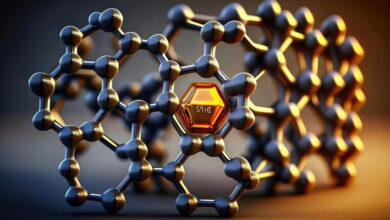Semiconductor Materials MCQs with Answers

Welcome to the Semiconductor Materials MCQs with Answers, it helps learners quickly identify areas for improvement in Semiconductor Materials Online Test.
| Semiconductor materials are essential in modern electronics, bridging the gap between conductors and insulators by having electrical conductivity that can be controlled. Common semiconductor materials include silicon, germanium, and compound semiconductors like gallium arsenide. These materials are pivotal in creating devices such as diodes, transistors, and integrated circuits, forming the backbone of electronic and optoelectronic technologies.
A semiconductor materials quiz often includes MCQs on semiconductor materials, testing knowledge on the intrinsic and extrinsic properties of these materials. Understanding the band gap, carrier concentration, and doping processes are typical topics in semiconductor physics multiple choice questions. These questions delve into how the addition of impurities can modify the electrical properties of semiconductors, making them n-type or p-type. Semiconductor properties MCQs focus on the electrical, thermal, and optical characteristics that define the behavior of semiconductor materials under various conditions. Semiconductor exam questions challenge students to apply their knowledge to practical scenarios, such as analyzing the performance of semiconductor devices under different operating conditions. Additionally, semiconductor devices MCQs cover the principles and operation of various semiconductor components, including diodes, transistors, and photovoltaic cells. By engaging with these quizzes and questions, students and professionals can enhance their understanding of semiconductor materials, crucial for advancements in electronics and technology. |
Semiconductor Materials Online Quiz
By presenting 3 options to choose from, Semiconductor Materials Quiz which cover a wide range of topics and levels of difficulty, making them adaptable to various learning objectives and preferences. You will have to read all the given answers of Semiconductor Materials Questions and Answers and click over the correct answer.
- Test Name: Semiconductor Materials MCQ Quiz Practice
- Type: Quiz Test
- Total Questions: 40
- Total Marks: 40
- Time: 40 minutes
Note: Answer of the questions will change randomly each time you start the test. Practice each quiz test at least 3 times if you want to secure High Marks. Once you are finished, click the View Results button. If any answer looks wrong to you in Quiz, simply click on question and comment below that question, so that we can update the answer in the quiz section.
Download Certificate of Semiconductor Materials Test
On the end of Quiz, you can download the certificate of the quiz if you got more than 70% marks.
Semiconductor Materials Flashcards
What type of semiconductor has more electrons in the conduction band than holes in the valence band?
N-type
Which semiconductor material is often used in high-frequency applications due to its higher electron mobility?
Gallium Arsenide
What type of doping introduces impurities that create excess holes in the semiconductor crystal?
P-type
What is the process of intentionally adding impurities to a semiconductor to alter its conductivity?
Doping
What type of doping introduces impurities that create excess electrons in the semiconductor crystal?
N-type
Which semiconductor material is often used in temperature sensors due to its negative temperature coefficient of resistance?
Silicon
Which type of semiconductor material has more holes in the valence band than electrons in the conduction band?
P-type
What is the term for the process of adding specific impurities to a semiconductor to control its electrical properties?
Doping
Which semiconductor material is commonly used in radio frequency (RF) applications?
Gallium Arsenide
What type of semiconductor material is formed by combining elements from Group III and Group V of the periodic table?
III-V
Which type of doping introduces impurities that have one less valence electron than the semiconductor crystal?
P-type
What is the term for a semiconductor with an excess of free electrons and holes due to doping?
Extrinsic
Which semiconductor material has a higher mobility of charge carriers, silicon or germanium?
Silicon
Which type of doping introduces impurities that have one more valence electron than the semiconductor crystal?
N-type
What is the primary method for controlling the electrical properties of semiconductor materials?
Doping
What type of semiconductor material is formed by combining elements from Group II and Group VI of the periodic table?
II-VI
Which semiconductor material is commonly used in infrared light-emitting diodes (IR LEDs)?
Gallium Arsenide
What is the term for a semiconductor with intentional impurities added to control its electrical behavior?
Extrinsic
What type of semiconductor material is formed by combining elements from Group IV of the periodic table?
IV-IV
What is the term for a semiconductor material with controlled impurities added for specific electrical properties?
Extrinsic
If you are interested to enhance your knowledge regarding Physics, Computer, and Biology please click on the link of each category, you will be redirected to dedicated website for each category.




